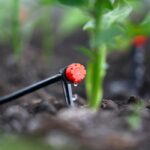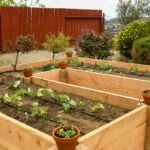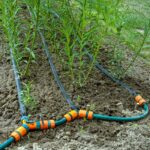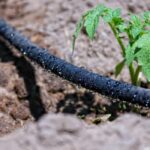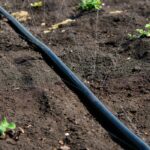A soaker hose can save you hours of watering time each week, and it delivers water exactly where the plants need it — at their roots. By properly setting up a soaker hose under foliage or mulch, you’ll be able to easily water your plants without wasting water or ruining the beauty of your garden. But if the point is to save water, then exactly how long should you run a soaker hose?
The length of time you should run your soaker hose depends on the garden size, soil conditions, weather, and climate. It’s best to first run the hose for only 30 minutes and then check the soil’s moisture conditions. Run the hose for longer if it’s dry or shorten the duration if it’s too wet.
Soaker hoses are ideal for gardeners who want to cut down their water use, but there are a few tips and tricks to getting the most out of this irrigation system. Let’s look at what a soaker hose does, how long you should run one for, and which plants you shouldn’t water with one, so that you can grow your garden with exactly the amount of water it needs.
What Is the Purpose of a Soaker Hose?
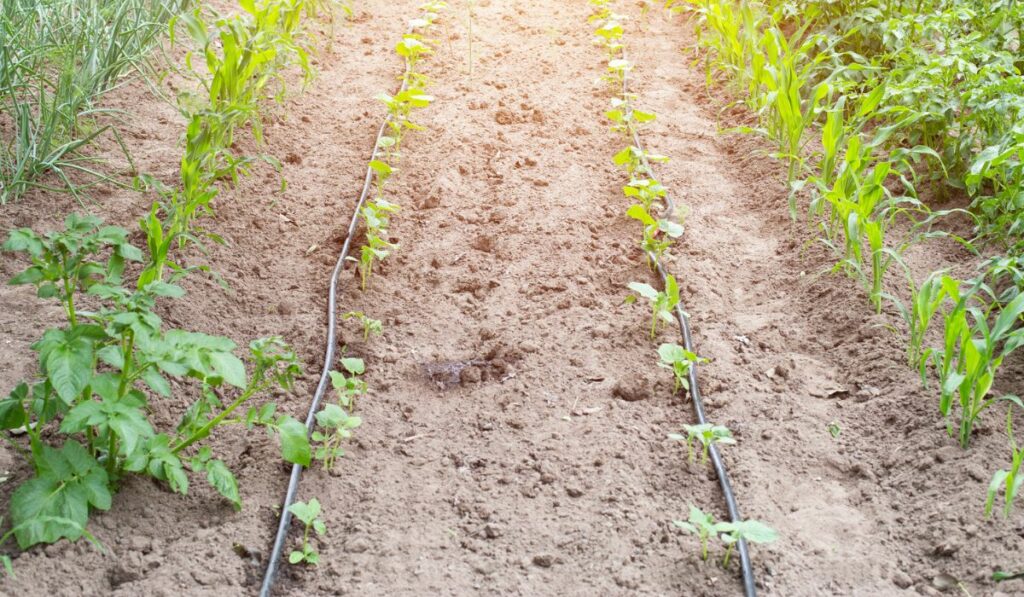
A soaker hose (on Amazon) resembles an average garden hose, but it’s typically constructed with a porous material that allows water to pass through. So, instead of the water coming out of a spout at one end, it seeps out along the entire length of the hose.
When it comes to its operation, a soaker hose is very similar to a drip irrigation system (on Amazon). Rather than spraying water over plants as you would with a typical garden hose, both systems work by delivering water straight to the roots.
However, a drip irrigation system is constructed with water-proof plastic tubing that’s pierced by tiny, strategically-placed holes. On the other hand, a soaker hose delivers water throughout its entire surface.
While soaker hoses are cheaper to purchase, their installation is a bit more complicated because you’ll have to spend a lot of time trying to regulate and adjust the pressure precisely.
How Long Should You Run a Soaker Hose?
It’s important to note that there’s no hard and fast rule on how long you should run your soaker hose. Instead, the answer to this question depends on the soil conditions and garden size, as well as the climate conditions.
Most gardeners set their soaker hose on a timer and run it for 30 to 45 minutes, several days a week. But that doesn’t mean that this exact arrangement will work for you as well. To find the right duration of time, you’ll need to test different time frames, measure soil penetration, monitor the response of your plants, and then make adjustments accordingly.
When you first install your soaker hose, it’s advisable to let the water run for 30 minutes before shutting it off and checking the moisture conditions of your soil. You can either do this with a moisture meter, like this one from XLUX (on Amazon) or by simply digging several inches into the soil.
If the soil feels dry at three inches, run your soaker hose for a bit longer. On the other hand, if the soil’s extremely wet, then shorten the duration of the timer. Keep adjusting your timer by five minutes until you find the right water balance.
In dry and scorching climates, you might need to run the soaker hose every single day, while running it once a week may be more than enough for areas that receive regular rainfall.
Using a Soaker Hose in a Vegetable Garden
To ensure your vegetables receive the right amount of water, it’s best to run your soaker hose for around 30 minutes two times a week. After every session, measure how deep the water went and check whether your plants feel and look sufficiently hydrated.
You might need to adjust the timer according to the layout of your vegetable garden. You may also need to increase the water pressure in areas where you have raised beds.
It’s best to wind your soaker hose around every row of vegetables and run it in a simple back-and-forth pattern to ensure each vegetable gets sufficient water. It’s also advisable to cover your soaker hose with hay or mulch, so it retains moisture and deprives weeds of sunlight.
Using a Soaker Hose for Shrubs and Trees
A soaker hose is a highly effective watering tool for shrubs and trees. If you loosely encircle the hose around the base of each tree, it will distribute water to the entire root ball. The bigger your tree, the longer you’ll have to run the soaker hose.
It’s best to run your soaker hose during the evenings and early mornings. The water should reach six to eight inches deep into the soil, so you might need to run your hose for a couple of hours to properly achieve this.
Your watering frequency will also depend on your region’s climate. So, make sure you test the soil around your shrubs and trees after a couple of days to get a rough estimate of how often you should run your soaker hose.
Keep in mind that newly planted shrubs and trees will need more water for proper growth and development. It’s best to water them more in the beginning and then reduce your watering frequency as the trees adjust to their new environment.
Run the soaker hose for around an hour every other day during the first week of planting. Run it every three days during the second week, and then water normally.
Which Plants Shouldn’t Be Watered With a Soaker Hose?
Soaker hoses aren’t a good option for large trees that are spaced further apart since a lot of water will be wasted in the distance between them. They’re also not ideal for lawns where the irrigation system needs to be hidden and kept out of sight.
Since soaker hoses can only be installed on flat surfaces, they’re also not suitable for pots or container gardens on the patio. Hoses that are forced to change elevation levels won’t provide even watering, so it’s best to avoid using them with potted gardens.
Which Plants Should Be Watered With a Soaker Hose?

Soaker hoses are ideal for vegetable gardens, where the plants are all laid out in evenly-spaced rows. These vegetable beds make soaker hose installation extremely easy and allow you to place the hose in such a way that it provides even irrigation to all of your plants.
This irrigation system is perfect for flower borders and beds as well. Remember that water seeps out along the entire length of the hose, so using it where your plants are clustered together will ensure the best and most efficient use of your water.
A densely-planted flower bed filled with rose bushes and annuals, such as pansies, is the perfect example of a good soaker hose application.
How Soil Type Impacts Your Garden’s Watering Needs
Soil type has a pretty big impact on your garden’s watering needs, which is why a good gardener knows exactly what kind of soil they have. You can easily determine the type of soil in your garden by holding a fistful and pressing it.
If the soil clumps together and easily forms shapes, it’s clay. If it holds together but breaks apart easily, it’s loam. If it disintegrates into tiny grains, then it’s sand.
Sandy soil doesn’t retain water very well and dries out fairly quickly, so you might need to water your plants more frequently. Conversely, soil that’s high in clay holds water for a long time, so too much irrigation could waterlog the soil and damage the plants growing in it.
Luckily, adding loam and compost to your plant beds can help balance both clay-heavy and sandy soils and help improve their water retention.




